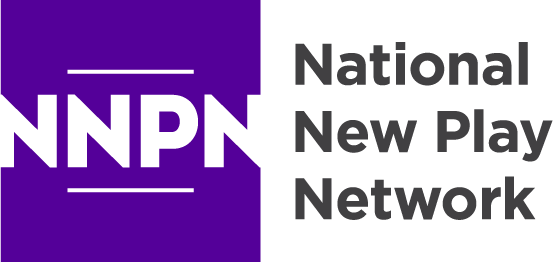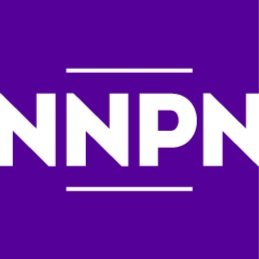Musings from the 2021 NNPN Annual Conference
At this point in our pandemic marathon, I suspect that many (if not most) of us have spent good portions of the past two years in various states of isolation: if not cut off from one another and on our own, then certainly cut off from practicing our craft or attending plays or gathering in familiar groups for rehearsals, workshops, readings, performances—all the familiar rituals and routines of our theatrical lives.
But thanks to countless intrepid social media managers and the clamorous online advocacy of some noisy voices like Jared Mezzochi and Caridad Svich (who stand out to me for putting their actions where their advocacy lives) and no few others, I know I at least am increasingly aware of the proliferating opportunities to access so much theater online, and the value of pursuing that access. That’s meant everything from filmed recordings of live performances during the worst months, now to livestreamed ventures when possible, or even more so to hybrid experiences exploring the boundaries and the possibilities. Because of these, we’ve shared two important experiences: first, artists have been able to keep working, even in unconventional or innovative ways, and to share that work with audiences and each other; and second, as a result, while we may have been apart, we’ve never had to be truly alone.
And thanks to the ongoing work of the National New Play Network, its leadership and membership alike, we’ve been able to share that experience in some truly meaningful ways, beyond simply access to performances. The recent online convening for the 2021 Annual Conference, held November 13th and 14th, provided ample examples—and left, for me, some powerfully lingering memories to go with concrete information and galvanizing inspiration.
Balanced as it was among plenary presentations, working breakouts, and the dynamic Playwrights Slam that opened the gathering, there was something for everyone and then some. As I’ve been asked to share a few highlights that stand out for me, here are only a few of the impressions and details that linger most powerfully: they include elements of functionality, Big Picture activism, some nitty-gritty on-the-ground operations, and of course a good dose of endorphin-inducing inspiration.
Broadly speaking, simply seeing so many faces and names gathered in common purpose and mutual support, upwards of 100 of us at various points, was itself inspiring. Old friends and new, all exemplifying the NNPN mantra that, It’s the network that makes the Network work. With nary a technical snafu to speak of, and a solid hosting platform on which to participate and gain access, the logistical side provided a solid platform for our many less-material musings. This may seem a small thing, but I’d argue it’s actually essential—demonstrating our future capacity to harness all the accessibility and flexibility of virtual gatherings without finding we must sacrifice comprehension or effectiveness. I welcomed the smooth operation, and it has stayed with me.
But I think what I most took away was the invocation to actual and active responsibility in looking out for ourselves individually and for one another collectively.
Our opening plenary with Lawrence Bennett, Lindsay Jones, Courtney Sale, and Pironne Yousefzadeh set a tone for the day’s work. We got plenty of Real Talk that encapsulated why Change is essential and what that Change can look like—and how to get there, instrumentally and realistically. I particularly appreciated the look back at history and legacy around the #NOMORE10OutOf12 push, sparked by Lindsay and picked up by the others, as well as a clear outline of where things stand and where they can head. Naturally, talk about working hours led to discussion of working conditions in general, and to harm to quality of life and quality of work. We were able to outline an appeal to the Capitalist measure of bottom line and use value of labor, as well as to more abstract investments in career longevity, artistic productivity, safety, and just about every other facet. This dovetailed beautifully with a shift to the larger landscape, from the panel and the voices in the chat—including consideration of self-care and resilience as essential parts of our practice; elements that can seem mutually exclusive with, you know, Making Theater, but which the panel helped unify.
There were plenty of other examples of instrumental changes, incremental and fundamental, that we can all take part in. But I think what I most took away was the invocation to actual and active responsibility in looking out for ourselves individually and for one another collectively. We identified systemic issues and practices, as I recall, but rather than descend into lamentations I found that the discussion focused on our recognizing that the status quo is not okay, that we deserve and can have better, and that we each have a part to play in bringing that about, for all. And we heard what that could look like, and concretely got some ways to help implement it.
For me, even the process once again supported content and best results: the foursome modeled some great panel practices, providing a range of viewpoints and perspectives while also meshing neatly into discernible harmony on larger issues. They amplified one another in some cases and gave alternatives in others—so that we never got a single dominant voice or view, nor bogged down in dispute (as if!); but it never felt as if everyone was just singing the exact same tune. All the while, the chat worked like a dream, allowing for simultaneous collective processing that further extended the conversation beyond the four panelists as catalysts and truly let us benefit from ALL the voices in the mix. At the latter end, the Q&A was comprehensive and effective, moderated deftly and delivering clarification and expansion alike. This might seem like focusing a great deal on form and process, but—in contrast to so many similar events lately—I truly believe that one reason we all seemed to have such a good experience, and the conversation was so dynamic, and I came away unusually charged and informed, was in fact because the form served the content and the content the form. As with so much that we do in theater, when these two are in balance, it tends to work.
Another highlight (among too many to list here) was the regional breakout. I can only speak for ours of course, but here’s the gist. Gathering as broadly a Mid-Atlantic affinity group, we were posed the seemingly simple query about a more “regionally specific” presence for NNPN—whether this was desirable, what it might look like, what we needed or wanted, how it could work. This quickly led, initially, to intriguing questions of how and why geography or regions would define any collective identity either for member theaters or Affiliated Artists, and how even (relative) proximity not only can fail to overcome logistical barriers to gathering but often fails to define actual affinity. Rather, we speculated about proximities of mission, vision, programming, scale, and the like as perhaps equally or more definitive.
There seemed to be interest in the idea of more, and more regionally based, showcases, in the vein of the KCACTF regional activities. There was productive discussion about a range of dramaturgical support work from literary management to devised development that sparked great questions if no solid solutions (hey, we’re dramaturgs, it’s what we do). And I hope our group facilitator Jenni Werner would agree that there were some productive thoughts about other things we could want or use from NNPN, whether that’s seed money or leveraging even more as a connector. For sure, nobody was against local mixers! And I recall some real excitement around the idea of how NNPN might find ways to open up more to serving Affiliated Artists, more clearly and concretely; there were some provocative questions about how much we default to replicating the structural bias to structure, and base our work out of/on/through institutional theaters. Natural—but what other mechanisms might there be or what else might serve individual artists and writers, we wondered?
And of course, kicking it all off was the Playwrights Slam. This brilliantly curated, tautly managed, inspiringly diverse round robin invited playwrights to select short samples of their work and then share that, taking on all the roles (and stage directions as needed). I’m not sure what was more on fire, the respective readings—all utterly different, and equally brilliant—or the chat that was blowing up as fast any everyone could type. As great as the pieces were, the playwrights reading their own words was a major highlight to me, and something I wish we could get more of. So many fantastic, wildly different kinds of writing, and so many different ways the writers found to deliver it. Overall, it was a sampling of the very things that bring us together and keep us connected: exciting new dramaturgies across a wild spectrum, bringing to life whole new worlds and people and relationships and jump-starting our imaginations; and a profound, unspoken sense of connection to one another and the work, individual in our reception and our responses but drawn ineffably together by our collective experience. Apart, but definitely not alone.
Thanks, NNPN, for these and so many more great memories—and no few actionable items on the To-Do list!


